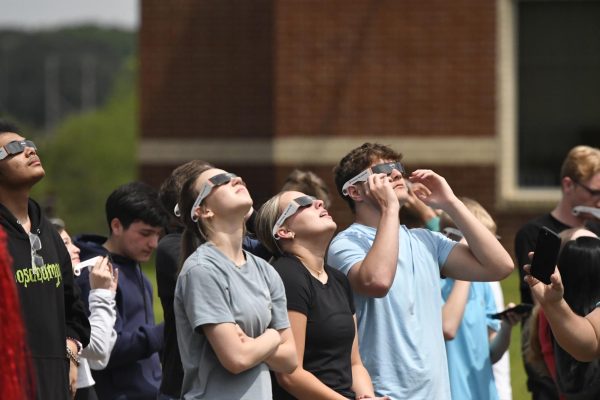COVID-19 Pandemic Reshapes U.S. Education System for Better
September 24, 2022
Most people in the U.S. and around the world know of the changes that came with the unforeseen circumstances of the COVID-19 pandemic. The pandemic has influenced the American education system more than people may realize. According to the United States Census Bureau, in an article by Kevin McElarth, “Nearly 93 percent of people in households with school-aged children reported their children engaged in some form of ‘distance learning.'”
The necessity for schools to adapt to virtual learning required teachers and students to use new resources like Google Meet and Kami. These tools allowed class to go on as normal while allowing students to social distance. The same is true for El Dorado High School. EHS Principal Sherry Hill expressed how she believed the pandemic paved the way for growth within El Dorado’s school system.
“I think teachers are using more technology, and we’ve provided more platforms and online services during covid. Some teachers, before covid, hadn’t really embraced as much technology in their classrooms. Now, I think it has become the norm for teachers. They put more things in Google Classroom; they utilize things like Kami, Canva, and Edpuzzle which many teachers didn’t use before.”
The pandemic has also changed how teachers work and organize. Hill expressed that she thought teachers at El Dorado High School have changed for the better. She said, “If I were still in the classroom I would have been one of the ones that would have struggled with using so much technology. But the pandemic would have forced me to have to learn, so I think that happened with a few people and I think they enjoyed it–to learn.”
Every day technology is constantly changing. However, the pandemic sped up the rate at which innovation occurred. In an article by Marcella Bombardieri of the Politico, Bombardieri discusses the effect of the pandemic on the rapid advancement of technology in the classroom. “The pandemic has unleashed a wave of innovation in education that has accelerated change and prompted blue-sky thinking throughout the system,” she said. She also questions if schools could do more with the technology that they have.
A constantly changing world needs a constantly changing education system to help young people adapt and keep up with the fast pace of our society. “What if schools delivered books during the summer? What if high school art students had access to graphic design and architecture software?”
The education system that most U.S. states follow has not changed since the industrial revolution. The basis of this system was to manufacture workers for factories and assembly lines — workers who could take orders and go through repetitive motions. However, in a study by MBO partners, described in an article by HR Dive, it is projected that by 2027, approximately 60 percent of the American workforce will be independent, a change we need to prepare our students for.
Although the pandemic has brought many negative and harmful effects, examine the benefits that it has brought. Maybe it is possible with the jump in technology and the changing structure of the American education system, that the future will bring a more adaptable and up-to-date system that can benefit students and teachers.





